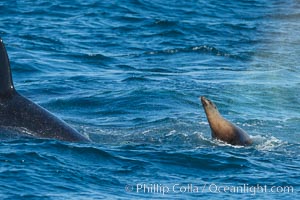
Killer whale attacking sea lion. Biggs transient orca and California sea lion.
Species: California sea lion, Killer whale, Orcinus orca, Zalophus californianus
Location: Palos Verdes, California
Image ID: 30430
Species: California sea lion, Killer whale, Orcinus orca, Zalophus californianus
Location: Palos Verdes, California
Image ID: 30430
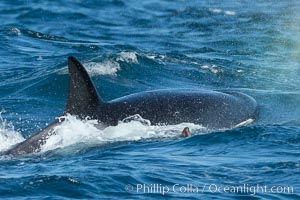
Killer whale attacking sea lion. Biggs transient orca and California sea lion.
Species: California sea lion, Killer whale, Orcinus orca, Zalophus californianus
Location: Palos Verdes, California
Image ID: 30431
Species: California sea lion, Killer whale, Orcinus orca, Zalophus californianus
Location: Palos Verdes, California
Image ID: 30431
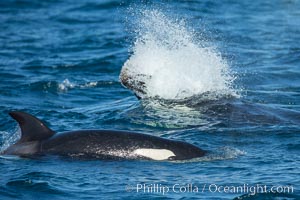
Killer whale attacking sea lion. Biggs transient orca and California sea lion.
Species: California sea lion, Killer whale, Orcinus orca, Zalophus californianus
Location: Palos Verdes, California
Image ID: 30432
Species: California sea lion, Killer whale, Orcinus orca, Zalophus californianus
Location: Palos Verdes, California
Image ID: 30432
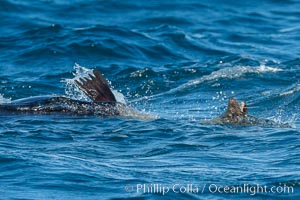
Killer whale attacking sea lion. Biggs transient orca and California sea lion.
Species: California sea lion, Killer whale, Orcinus orca, Zalophus californianus
Location: Palos Verdes, California
Image ID: 30433
Species: California sea lion, Killer whale, Orcinus orca, Zalophus californianus
Location: Palos Verdes, California
Image ID: 30433
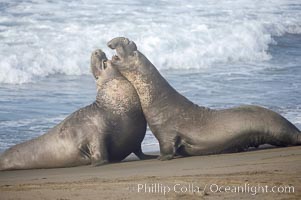
Male elephant seals (bulls) rear up on their foreflippers and fight for territory and harems of females. Bull elephant seals will haul out and fight from December through March, nearly fasting the entire time as they maintain their territory and harem. They bite and tear at each other on the neck and shoulders, drawing blood and creating scars on the tough hides.
Species: Elephant seal, Mirounga angustirostris
Location: Piedras Blancas, San Simeon, California
Image ID: 20377
Species: Elephant seal, Mirounga angustirostris
Location: Piedras Blancas, San Simeon, California
Image ID: 20377
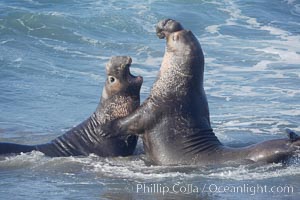
Male elephant seals (bulls) rear up on their foreflippers and fight in the surf for access for mating females that are in estrous. Such fighting among elephant seals can take place on the beach or in the water. They bite and tear at each other on the neck and shoulders, drawing blood and creating scars on the tough hides.
Species: Elephant seal, Mirounga angustirostris
Location: Piedras Blancas, San Simeon, California
Image ID: 20407
Species: Elephant seal, Mirounga angustirostris
Location: Piedras Blancas, San Simeon, California
Image ID: 20407
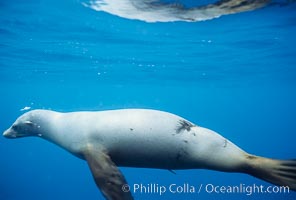
Galapagos sea lion with shark bite.
Species: Galapagos sea lion, Zalophus californianus wollebacki, Zalophus californianus wollebaeki
Location: Galapagos Islands, Ecuador
Image ID: 01713
Species: Galapagos sea lion, Zalophus californianus wollebacki, Zalophus californianus wollebaeki
Location: Galapagos Islands, Ecuador
Image ID: 01713
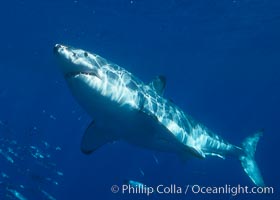
A great white shark swims through the clear waters of Isla Guadalupe, far offshore of the Pacific Coast of Baja California. Guadalupe Island is host to a concentration of large great white sharks, which visit the island to feed on pinnipeds and tuna.
Species: Great white shark, Carcharodon carcharias
Location: Guadalupe Island (Isla Guadalupe), Baja California, Mexico
Image ID: 07701
Species: Great white shark, Carcharodon carcharias
Location: Guadalupe Island (Isla Guadalupe), Baja California, Mexico
Image ID: 07701
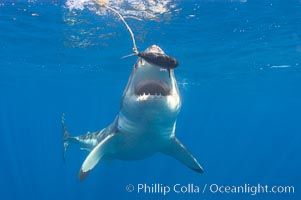
A great white shark lunges to chomp a piece of bait hanging amid the clear waters of Isla Guadalupe, far offshore of the Pacific Coast of Baja California. Guadalupe Island is host to a concentration of large great white sharks, which visit the island to feed on pinnipeds and tuna.
Species: Great white shark, Carcharodon carcharias
Location: Guadalupe Island (Isla Guadalupe), Baja California, Mexico
Image ID: 07681
Species: Great white shark, Carcharodon carcharias
Location: Guadalupe Island (Isla Guadalupe), Baja California, Mexico
Image ID: 07681
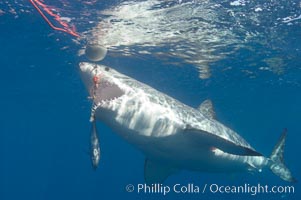
A great white shark lunges to chomp a piece of bait hanging amid the clear waters of Isla Guadalupe, far offshore of the Pacific Coast of Baja California. Guadalupe Island is host to a concentration of large great white sharks, which visit the island to feed on pinnipeds and tuna.
Species: Great white shark, Carcharodon carcharias
Location: Guadalupe Island (Isla Guadalupe), Baja California, Mexico
Image ID: 07682
Species: Great white shark, Carcharodon carcharias
Location: Guadalupe Island (Isla Guadalupe), Baja California, Mexico
Image ID: 07682
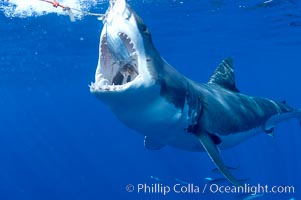
A great white shark lunges to chomp a piece of bait hanging amid the clear waters of Isla Guadalupe, far offshore of the Pacific Coast of Baja California. Guadalupe Island is host to a concentration of large great white sharks, which visit the island to feed on pinnipeds and tuna.
Species: Great white shark, Carcharodon carcharias
Location: Guadalupe Island (Isla Guadalupe), Baja California, Mexico
Image ID: 07683
Species: Great white shark, Carcharodon carcharias
Location: Guadalupe Island (Isla Guadalupe), Baja California, Mexico
Image ID: 07683
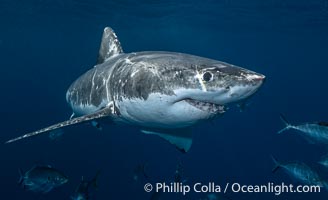
Great White Shark, South Neptune Islands, South Australia.
Species: Great white shark, Carcharodon carcharias
Location: South Neptune Islands, South Australia
Image ID: 39151
Species: Great white shark, Carcharodon carcharias
Location: South Neptune Islands, South Australia
Image ID: 39151
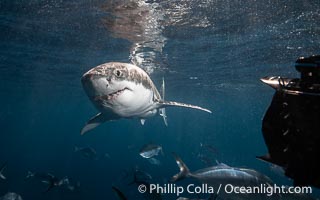
Great White Shark, South Neptune Islands, South Australia.
Species: Great white shark, Carcharodon carcharias
Location: South Neptune Islands, South Australia
Image ID: 39152
Species: Great white shark, Carcharodon carcharias
Location: South Neptune Islands, South Australia
Image ID: 39152
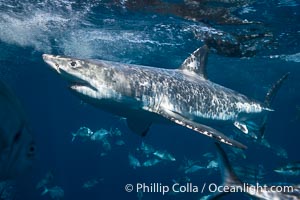
Great White Shark, South Neptune Islands, South Australia.
Species: Great white shark, Carcharodon carcharias
Location: South Neptune Islands, South Australia
Image ID: 39153
Species: Great white shark, Carcharodon carcharias
Location: South Neptune Islands, South Australia
Image ID: 39153
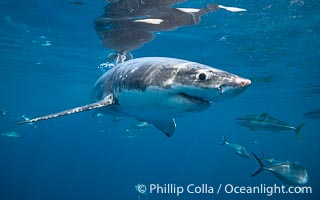
Great White Shark, South Neptune Islands, South Australia.
Species: Great white shark, Carcharodon carcharias
Location: South Neptune Islands, South Australia
Image ID: 39154
Species: Great white shark, Carcharodon carcharias
Location: South Neptune Islands, South Australia
Image ID: 39154
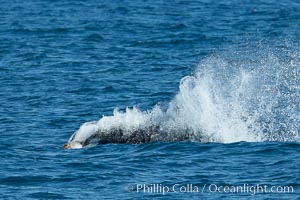
Killer whale attacking sea lion. Biggs transient orca and California sea lion.
Species: California sea lion, Killer whale, Orcinus orca, Zalophus californianus
Location: Palos Verdes, California
Image ID: 30425
Species: California sea lion, Killer whale, Orcinus orca, Zalophus californianus
Location: Palos Verdes, California
Image ID: 30425
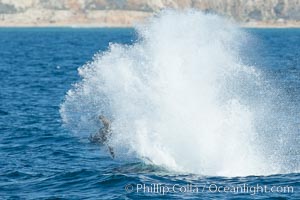
Killer whale attacking sea lion. Biggs transient orca and California sea lion.
Species: California sea lion, Killer whale, Orcinus orca, Zalophus californianus
Location: Palos Verdes, California
Image ID: 30426
Species: California sea lion, Killer whale, Orcinus orca, Zalophus californianus
Location: Palos Verdes, California
Image ID: 30426
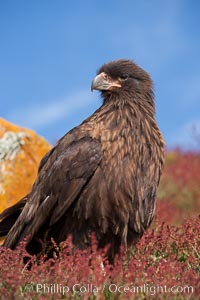
Straited caracara, a bird of prey found throughout the Falkland Islands. The striated caracara is an opportunistic feeder, often scavenging for carrion but also known to attack weak or injured birds.
Species: Striated caracara, Phalcoboenus australis
Location: Steeple Jason Island, Falkland Islands, United Kingdom
Image ID: 24125
Species: Striated caracara, Phalcoboenus australis
Location: Steeple Jason Island, Falkland Islands, United Kingdom
Image ID: 24125
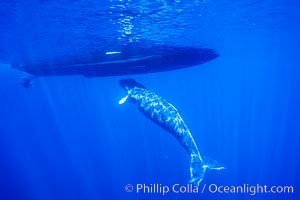
Humpback whale, abandoned calf alongside Hawaii Whale Research Foundation research boat. This young calf lived only a few days after being abandoned or separated from its mother, and was eventually attacked by tiger sharks.
Species: Humpback whale, Megaptera novaeangliae
Location: Maui, Hawaii
Image ID: 05983
Species: Humpback whale, Megaptera novaeangliae
Location: Maui, Hawaii
Image ID: 05983
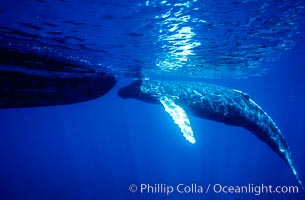
Humpback whale, abandoned calf alongside Hawaii Whale Research Foundation research boat. This young calf lived only a few days after being abandoned or separated from its mother, and was eventually attacked by tiger sharks.
Species: Humpback whale, Megaptera novaeangliae
Location: Maui, Hawaii
Image ID: 05987
Species: Humpback whale, Megaptera novaeangliae
Location: Maui, Hawaii
Image ID: 05987
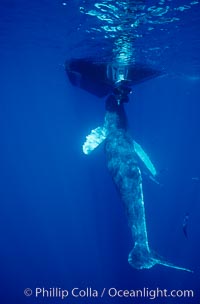
Humpback whale, abandoned calf alongside Hawaii Whale Research Foundation research boat. This young calf lived only a few days after being abandoned or separated from its mother, and was eventually attacked by tiger sharks.
Species: Humpback whale, Megaptera novaeangliae
Location: Maui, Hawaii
Image ID: 05992
Species: Humpback whale, Megaptera novaeangliae
Location: Maui, Hawaii
Image ID: 05992

Attack on Chatham, Willem Schellinks (ca.1627-1678).
Location: Rijksmuseum, Amsterdam, Holland, Netherlands
Image ID: 29477
Location: Rijksmuseum, Amsterdam, Holland, Netherlands
Image ID: 29477
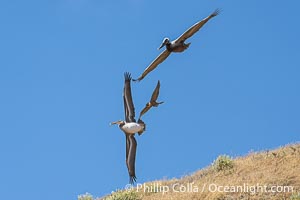
Peregrine Falcon attacking brown pelican, Torrey Pines State Natural Reserve.
Species: Peregrine Falcon, Falco peregrinus
Location: Torrey Pines State Reserve, San Diego, California
Image ID: 39337
Species: Peregrine Falcon, Falco peregrinus
Location: Torrey Pines State Reserve, San Diego, California
Image ID: 39337
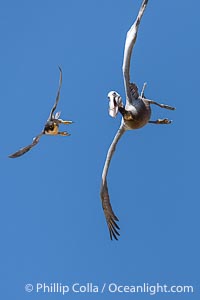
Peregrine Falcon attacking brown pelican, Torrey Pines State Natural Reserve.
Species: Peregrine Falcon, Falco peregrinus
Location: Torrey Pines State Reserve, San Diego, California
Image ID: 39338
Species: Peregrine Falcon, Falco peregrinus
Location: Torrey Pines State Reserve, San Diego, California
Image ID: 39338
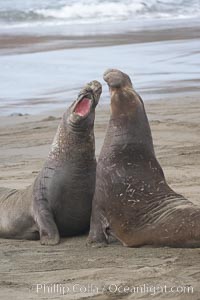
Male elephant seals (bulls) rear up on their foreflippers and fight for territory and harems of females. Bull elephant seals will haul out and fight from December through March, nearly fasting the entire time as they maintain their territory and harem. They bite and tear at each other on the neck and shoulders, drawing blood and creating scars on the tough hides.
Species: Elephant seal, Mirounga angustirostris
Location: Piedras Blancas, San Simeon, California
Image ID: 20372
Species: Elephant seal, Mirounga angustirostris
Location: Piedras Blancas, San Simeon, California
Image ID: 20372
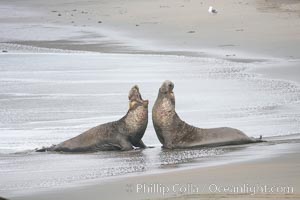
Male elephant seals (bulls) rear up on their foreflippers and fight for territory and harems of females. Bull elephant seals will haul out and fight from December through March, nearly fasting the entire time as they maintain their territory and harem. They bite and tear at each other on the neck and shoulders, drawing blood and creating scars on the tough hides.
Species: Elephant seal, Mirounga angustirostris
Location: Piedras Blancas, San Simeon, California
Image ID: 20382
Species: Elephant seal, Mirounga angustirostris
Location: Piedras Blancas, San Simeon, California
Image ID: 20382
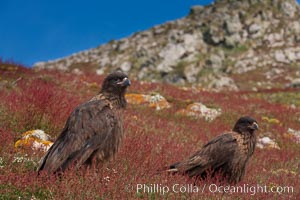
Straited caracara, a bird of prey found throughout the Falkland Islands. The striated caracara is an opportunistic feeder, often scavenging for carrion but also known to attack weak or injured birds.
Species: Striated caracara, Phalcoboenus australis
Location: Steeple Jason Island, Falkland Islands, United Kingdom
Image ID: 24126
Species: Striated caracara, Phalcoboenus australis
Location: Steeple Jason Island, Falkland Islands, United Kingdom
Image ID: 24126
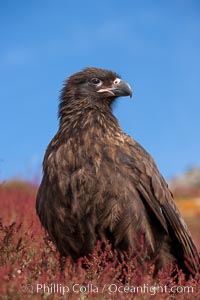
Straited caracara, a bird of prey found throughout the Falkland Islands. The striated caracara is an opportunistic feeder, often scavenging for carrion but also known to attack weak or injured birds.
Species: Striated caracara, Phalcoboenus australis
Location: Steeple Jason Island, Falkland Islands, United Kingdom
Image ID: 24275
Species: Striated caracara, Phalcoboenus australis
Location: Steeple Jason Island, Falkland Islands, United Kingdom
Image ID: 24275
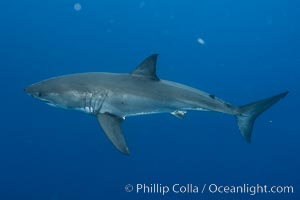
Great white shark, research identification photograph. A great white shark is countershaded, with a dark gray dorsal color and light gray to white underside, making it more difficult for the shark's prey to see it as approaches from above or below in the water column. The particular undulations of the countershading line along its side, where gray meets white, is unique to each shark and helps researchers to identify individual sharks in capture-recapture studies. Guadalupe Island is host to a relatively large population of great white sharks who, through a history of video and photographs showing their countershading lines, are the subject of an ongoing study of shark behaviour, migration and population size.
Species: Great white shark, Carcharodon carcharias
Location: Guadalupe Island (Isla Guadalupe), Baja California, Mexico
Image ID: 28761
Species: Great white shark, Carcharodon carcharias
Location: Guadalupe Island (Isla Guadalupe), Baja California, Mexico
Image ID: 28761
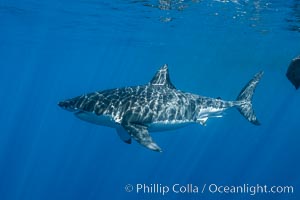
Great white shark, research identification photograph. A great white shark is countershaded, with a dark gray dorsal color and light gray to white underside, making it more difficult for the shark's prey to see it as approaches from above or below in the water column. The particular undulations of the countershading line along its side, where gray meets white, is unique to each shark and helps researchers to identify individual sharks in capture-recapture studies. Guadalupe Island is host to a relatively large population of great white sharks who, through a history of video and photographs showing their countershading lines, are the subject of an ongoing study of shark behaviour, migration and population size.
Species: Great white shark, Carcharodon carcharias
Location: Guadalupe Island (Isla Guadalupe), Baja California, Mexico
Image ID: 28762
Species: Great white shark, Carcharodon carcharias
Location: Guadalupe Island (Isla Guadalupe), Baja California, Mexico
Image ID: 28762